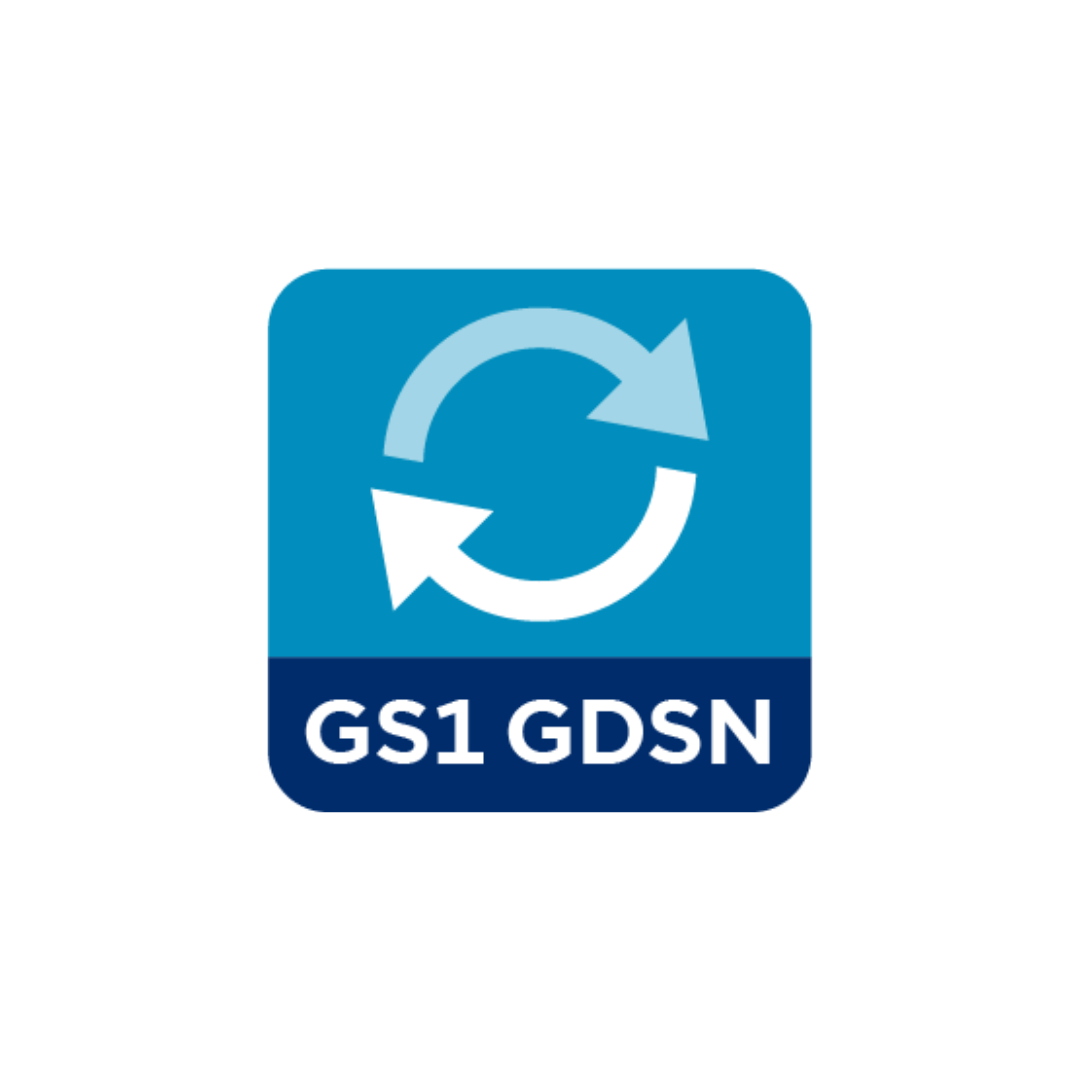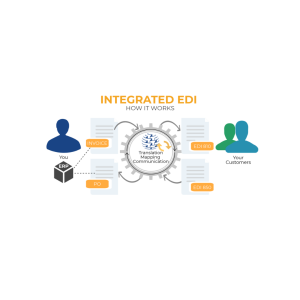Introduction: GDSN Explained: A Simple Guide for Retail Success
GDSN has become a critical backbone for retail success, with over 40 million Global Trade Identification Numbers registered in the system by 2025. If you’re wondering what GDSN means and why it matters, you’re not alone – many retailers are still discovering its importance.
84% of consumers consider product content vital when making purchase decisions, while 81% are willing to switch to brands offering more detailed product information. This is where GDSN data becomes invaluable. The Global Data Synchronization Network (what GDSN stands for) connects trading partners through data pools, ensuring synchronized and accurate product information across the supply chain.
We’ve seen firsthand how GS1 GDSN standards have transformed retail operations. With the GDSN standard incorporating over 3,000 different attributes for each trade item, retailers can provide the transparency modern shoppers demand. Consequently, businesses that fail to comply with these standards risk losing trading partners, revenue, and market share.
In this simple guide, we’ll explain everything you need to know about GDSN providers and implementation to ensure your retail business thrives in 2025 and beyond.
What is GDSN and Why Does it Matter
The Global Data Synchronization Network represents the backbone of modern product data management systems. Unlike traditional methods that led to inconsistencies and errors, GDSN creates a streamlined approach to product information sharing that has become essential for retail success.
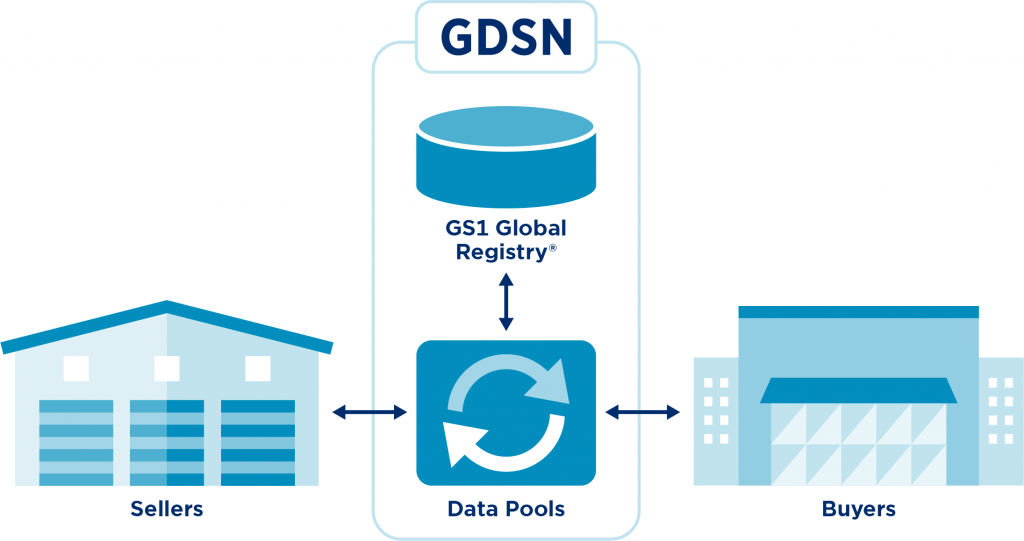
GDSN Meaning and Origin
GDSN stands for Global Data Synchronization Network—an internet-based, interconnected network of interoperable data pools governed by standardized protocols. This network emerged as a solution to the complex challenge of maintaining consistent product information across global supply chains.
Originally developed to address discrepancies in product data between trading partners, GDSN has evolved into the world’s largest product data network. The system operates using a publish-subscribe pattern between trading partners, with each participant registering and accessing the network via specialized data pools.
What makes GDSN particularly valuable is its ability to ensure high-quality product content is uploaded, maintained, and shared automatically. This gives trading partners immediate access to the most current and complete information needed for product exchange in both local and global markets.
What does GDSN stand for?
As mentioned, GDSN stands for Global Data Synchronization Network. Let’s break down what this means:
- Global: The network operates worldwide, connecting businesses across countries and continents
- Data: It deals specifically with product information and attributes
- Synchronization: Ensures all parties have identical, up-to-date information
- Network: A connected system of data pools that facilitate information exchange
GDSN enables companies of all sizes to share high-quality product information seamlessly across markets. The network functions as a data-sharing protocol that enables continuous updates of product master data between trading partners.
Through this system, stakeholders establish an authoritative data source that aligns product information across internal systems and with trading partners. This includes critical product attributes such as weight, description, brand name, Global Trade Item Number (GTIN), and manufacturer information.
The Role of GS1 in GDSN
GS1 serves as the foundation upon which GDSN operates. As an international, non-profit organization, GS1 maintains standards for barcodes, RFID tags, and supply chain communications, including Electronic Data Interchange.
The relationship between GS1 and GDSN is symbiotic—GDSN uses GS1 standards to facilitate real-time sharing of standardized product data among trading partners. Additionally, GS1 developed GDSN to support high-quality product data exchange and continually updates it to match current standards of product data sharing.
GS1 Global Registry acts as a directory within the GDSN system, pointing to specific data pools where information is housed. It matches subscriptions to registrations to facilitate proper synchronization between trading partners. Furthermore, Drummond Group, LLC serves as GS1’s official GDSN testing and certification agency, ensuring compliance with established standards.
The significance of GDSN in 2025 cannot be overstated. According to research, 81% of consumers are willing to switch to brands that provide more detailed product information. Through GDSN, businesses can meet this demand while improving their operational efficiency.
Companies participating in the GDSN data network have observed favorable associations between network usage and critical business metrics, including improved customer service, increased revenues, enhanced order accuracy, and better supply chain management.
How the GDSN Works: A Simplified Breakdown
The inner workings of GDSN might seem complex at first glance, but essentially, it operates through a structured network that enables seamless data exchange between trading partners. Think of it as a global telephone network—different companies can use different service providers yet still communicate effectively because they follow the same standards.
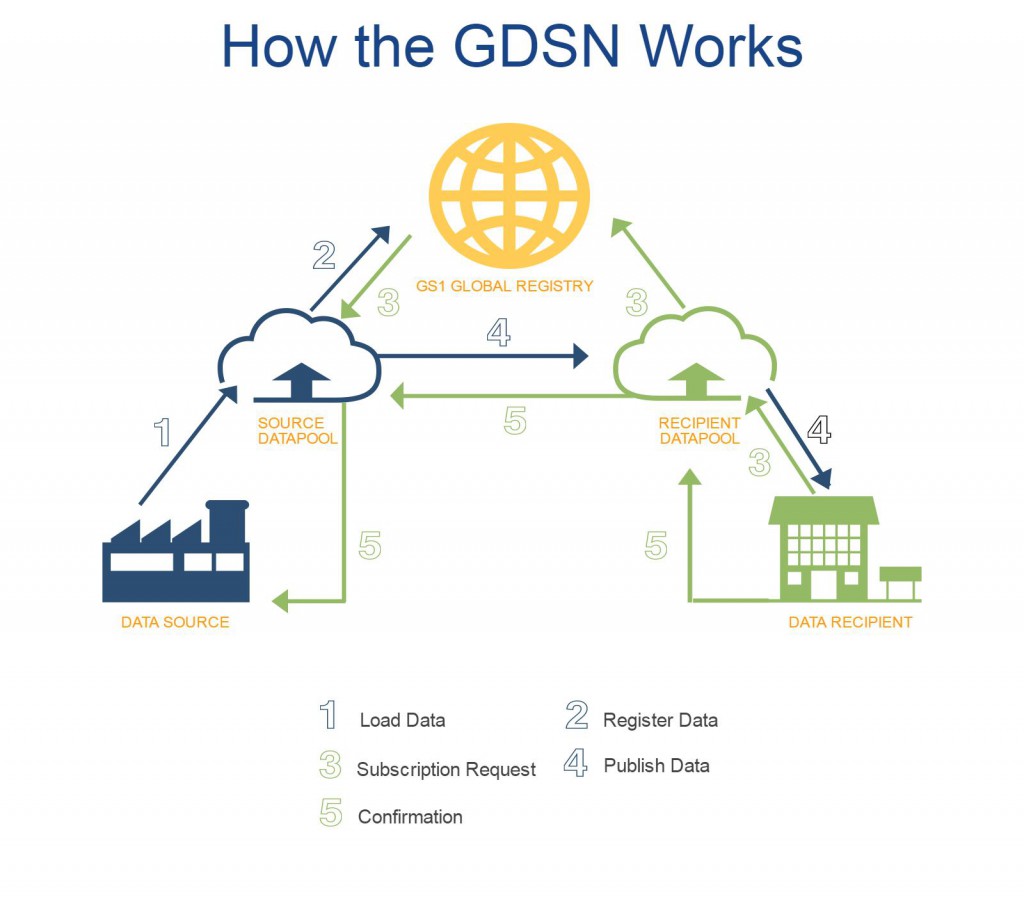
Understanding GDSN Data Pools
GDSN data pools serve as specialized repositories for product information that comply with GS1 standards. Currently, there are 44 GDSN-certified data pools worldwide. These data pools store supply chain information and provide users with a single point of entry for accessing the network.
What makes these data pools special is their certification, which ensures they’re interoperable—meaning they can communicate with each other regardless of which trading partner uses which pool. Each data pool must undergo testing to verify compliance with GS1 standards before certification.
Despite functioning similarly at their core, data pools differ in their capabilities, user experience, pricing models, and additional services offered. For instance, Commport-certified GDSN solution connects businesses across 25 countries with over 7,500 trading partners.
How Data Synchronization Happens
The synchronization process follows a straightforward five-step procedure:
- Load Data: The supplier prepares internal data to match GS1 standards and uploads product information to their chosen GDSN-certified data pool.
- Register Data: The supplier’s data pool sends basic information about each item to the GS1 Global Registry, which acts as a directory that points to where the complete data is stored.
- Request Subscription: The data recipient, through their own data pool, subscribes to receive the supplier’s product information.
- Publish Data: Upon receiving the subscription request, the supplier’s data pool publishes the requested information to the recipient’s data pool.
- Confirm & Inform: The recipient sends confirmation back through the data pools, informing the supplier about the action taken.
After this initial setup, product information continues to be automatically synchronized between trading partners whenever updates occur. This ensures all parties always have accurate, up-to-date information.
The Role of GTINs and GLNs
Two key identification standards form the foundation of GDSN:
Global Trade Item Numbers (GTINs) uniquely identify products at any packaging level throughout the supply chain. Similar to how UPCs function in North America, GTINs are the global standard for product identification. They enable separate item records for each packaging level (individual unit, case, pallet) and are required for any product registered in the GDSN.
Global Location Numbers (GLNs) identify parties and locations within the supply chain. Every company participating in GDSN must have at least one GLN to identify itself within the network. GLNs provide a standardized way to track products as they move between locations and help identify who’s involved in transactions.
Together, these product identification standards enable the GDSN to function properly—GTINs tell you what the product is, while GLNs tell you who has it and where it’s located. This standardized approach creates a common language that all trading partners can understand, regardless of their location or industry.
Key Benefits of Using GDSN for Retailers
Retailers who implement GDSN experience significant advantages across multiple operational areas. As supply chains become increasingly complex and customer expectations evolve, these GDSN benefits have grown in strategic importance, delivering tangible returns that directly impact the bottom line.
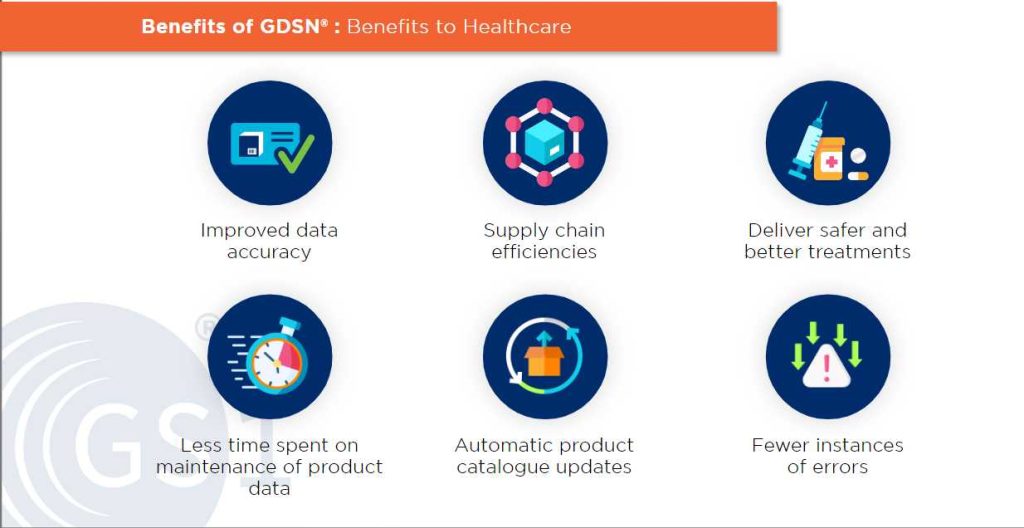
1. Improved Product Data Accuracy
GDSN ensures retailers receive precise and consistent product data from suppliers, effectively reducing errors and discrepancies in product listings. Through standardization and validation rules, the quality of product information improves dramatically.
The GS1 Data Quality Framework enforces accuracy within the gdsn data pool, creating a single data record for each level of packaging. This standardized approach virtually eliminates data reconciliation errors between retail partners.
Moreover, the GS1 Global Data Model and Attribute Definitions for Business standards enable greater data quality within the gs1 gdsn network. These standards clarify technical terminology, helping data senders get their content right the first time.
2. Faster Time-to-Market
One of the most compelling advantages of what gdsn stands for is the acceleration of product launches. Information for the listing process is provided in real-time, allowing retailers to get products on shelves faster.
A recent survey by GS1 USA found that businesses implementing the gdsn standard reported a 30% increase in operational efficiency. This efficiency gives retailers a competitive edge as products reach the market more quickly with fewer discrepancies.
The automated content delivery process reduces the time required to launch new shopping experiences that attract and engage consumers. Subsequently, retailers can quickly access new product information, gaining a significant advantage in today’s fast-paced market.
3. Enhanced Consumer Trust
According to Forrester Research, “The No. 1 feature online shoppers want from a website is product information“. Through GDSN providers, retailers can deliver accurate, consistent product information across all channels.
The foundation of consumer trust lies in content accuracy. When a consumer’s initial encounter with a product includes accurate, up-to-date information, they have good reason to trust the brand and continue their purchase journey.
Research shows that 94% of consumers are more likely to be loyal to brands offering complete transparency. This loyalty translates directly to business growth, with 73% of consumers willing to pay more for products providing detailed information about sourcing and production processes.
4. Reduced Operational Errors
Organizations implementing the global data synchronization network experience remarkable improvements in operational metrics:
- A 25% reduction in data errors
- A 30% reduction in outstanding days payable
- A 73% reduction in ordering discrepancies
These efficiencies directly impact a retailer’s bottom line. Implementing track and trace solutions can reduce inventory errors by up to 30%, optimizing transportation costs, and minimizing excess inventory.
The GDSN data pool enables better category and promotion management, easier administrative data handling, smoother logistics, and more satisfied consumers. Ultimately, accurate data helps retailers manage inventory more effectively, reducing overstock and stockouts, which enhances customer satisfaction.
Through automated data synchronization, retailers significantly reduce the time and resources required for manual data entry and updates. This allows for improved data-driven decision-making and helps businesses respond more effectively to changing market demands.
Choosing the Right GDSN Provider
Selecting a GDSN data pool is a crucial decision that impacts your entire product data strategy. Fortunately, GS1 standards ensure you only need one data pool to connect with all trading partners, regardless of which data pools they use.
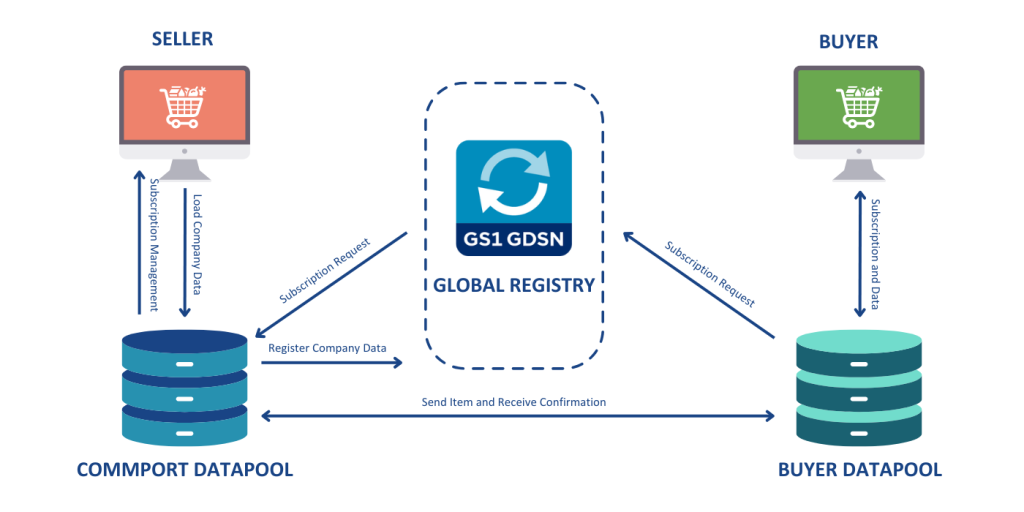
What to Look for in a GDSN Provider
During your evaluation process, focus on these essential criteria when selecting a GDSN provider:
- Support capabilities – Assess their experience with implementations in your industry and markets
- Technical compatibility – Determine if they support your preferred data loading methods (spreadsheet uploads, direct machine-to-machine connections, or GUI interfaces)
- Validation services – Check what data validations they perform before transmission and how feedback is provided
- Pricing structure – Compare subscription models, implementation fees, and whether costs are based on GTIN count or revenue
Above all, evaluate whether the data pool is ready to support your specific customer requirements and attribute needs. Experienced providers should share best practices from successful implementations in your industry.
Popular GDSN Providers in the Market
Currently, there are 44 GS1-certified GDSN data pools worldwide. Each offers different capabilities and specializations. The most popular one is Commport GDSN Datapool, which is a GS1-certified datapool since 2005.
The GS1 website maintains an updated list of certified data pools along with their established connections. Each certified provider must comply with technical performance criteria, operational standards, implementation metrics, service level compliance, and security protocols.
Integrating GDSN with your PIM system
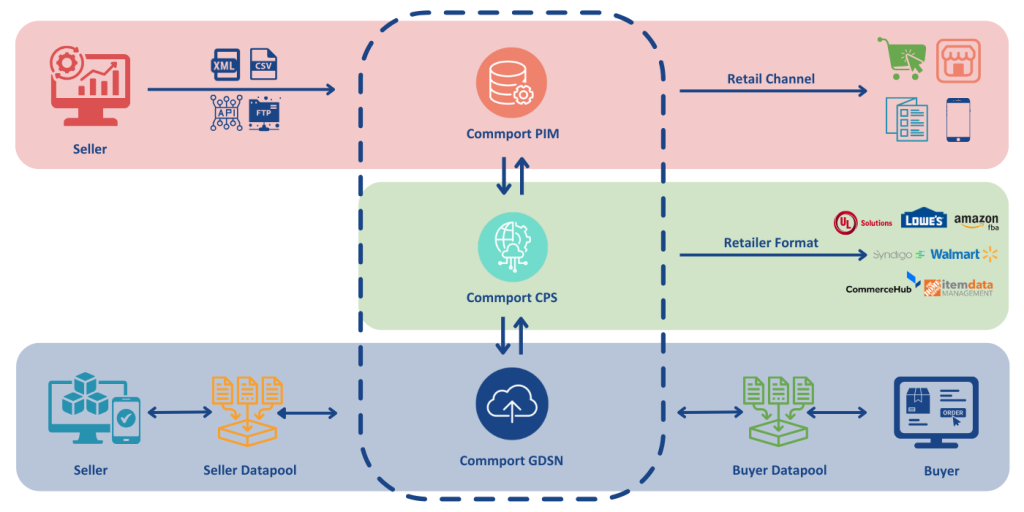
Many businesses find optimal results when integrating GDSN with their Product Information Management (PIM) systems. This combination leverages both systems’ strengths – PIM for internal management and enrichment of product data, and GDSN for standardized external synchronization.
Initially, evaluate whether your GDSN provider offers direct integration with your existing PIM solution. The ideal setup allows your PIM to serve as the single source of truth while the GDSN data pool handles the standardization and synchronization aspects.
Several data pools provide APIs or dedicated connectors that facilitate seamless PIM integration, enabling automated data flows between systems and minimizing manual work. This approach creates a comprehensive solution addressing both internal and external data management needs.
Conclusion
GDSN has undoubtedly transformed how retailers manage product data across global supply chains. Throughout this guide, we’ve seen how standardized data sharing addresses critical retail challenges while creating substantial business advantages. Companies embracing this technology experience fewer errors, faster product launches, and stronger consumer relationships—all crucial elements for retail success.
GDSN implementation isn’t merely a technical project—it represents a strategic investment in your retail business’s future. Companies that prioritize accurate, synchronized product data position themselves for sustained growth and competitive advantage in the increasing digital retail landscape of 2025 and beyond.
Commport GS1 Certified GDSN Datapool
Download: GDSN Buyers Guide
Empower your business with global data synchronization; download our GDSN Buyer's Guide today and take the first step towards streamlined, accurate, and compliant product data management.
Frequently Asked Questions
GDSN stands for Global Data Synchronization Network. It’s a system that allows retailers and suppliers to share standardized product information efficiently. GDSN is crucial for ensuring accurate product data, faster time-to-market, improved consumer trust, and reduced operational errors.
GDSN operates through a network of certified data pools. Suppliers upload product information to their chosen data pool, which then synchronizes this data with other pools. Retailers can subscribe to receive this information, ensuring all parties have access to the same up-to-date product details.
Key benefits include improved product data accuracy, faster product launches, enhanced consumer trust due to transparent information, and reduced operational errors. These advantages lead to increased efficiency, better inventory management, and improved customer satisfaction.
Common challenges include transitioning from manual data entry, ensuring internal collaboration across departments, and complying with GDSN standards. Overcoming these hurdles often requires dedicated effort and resources, but the long-term benefits outweigh the initial difficulties.
When selecting a GDSN provider, consider their support capabilities, technical compatibility with your systems, validation services, and pricing structure. It’s also important to ensure they can meet your specific industry requirements and integrate well with your existing Product Information Management (PIM) system if you have one.

